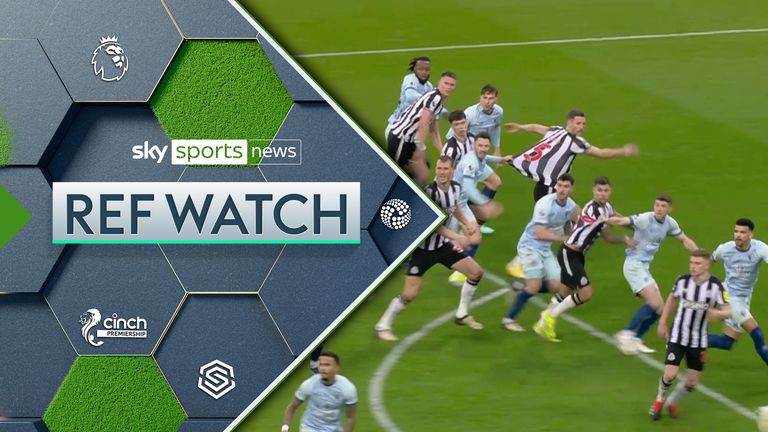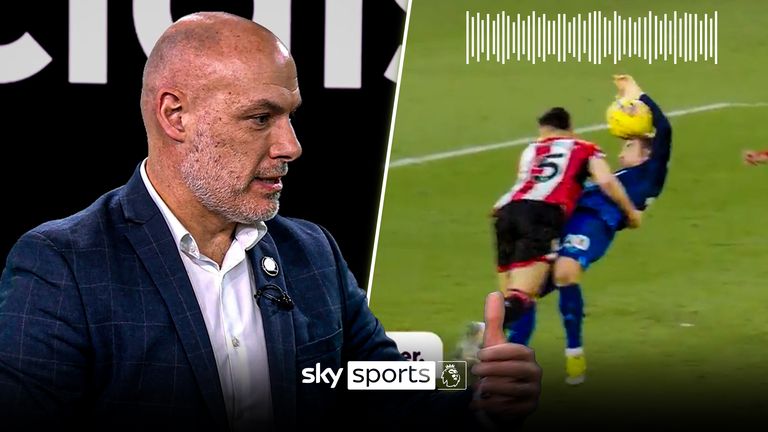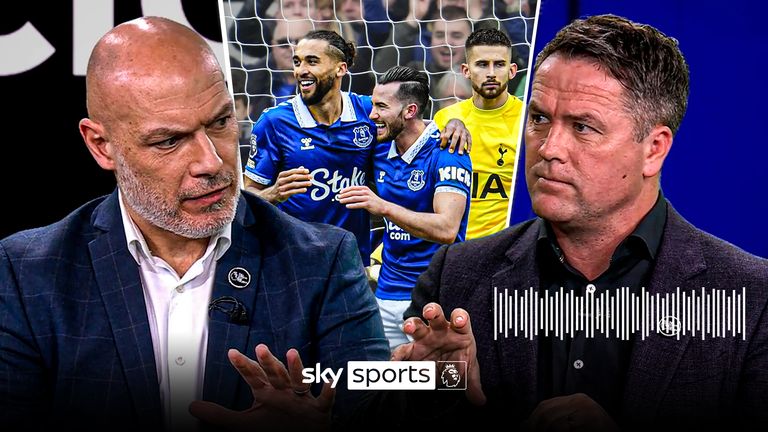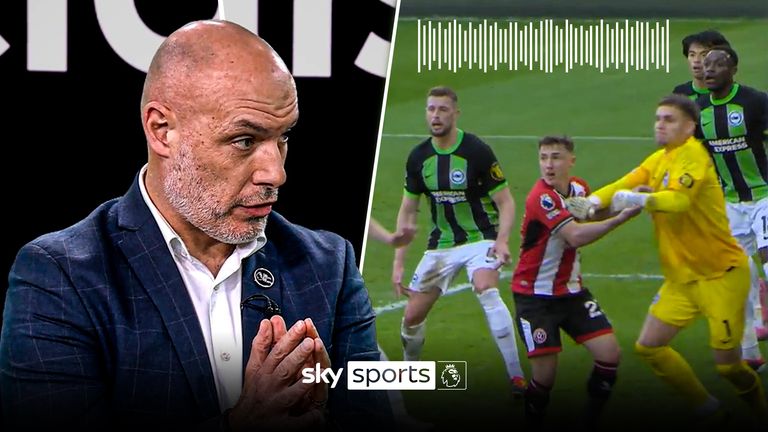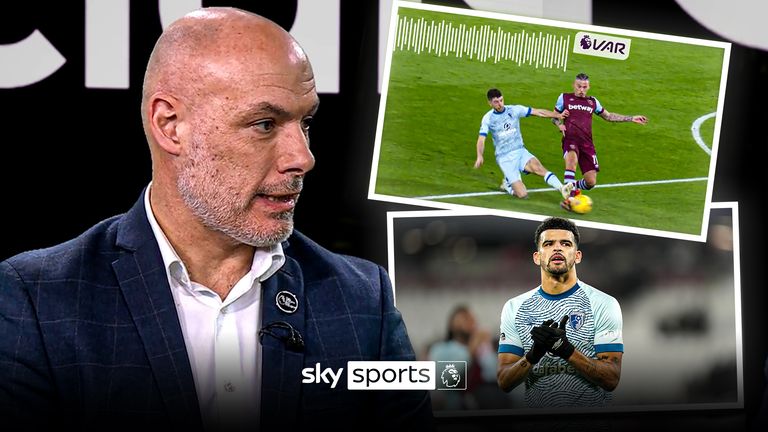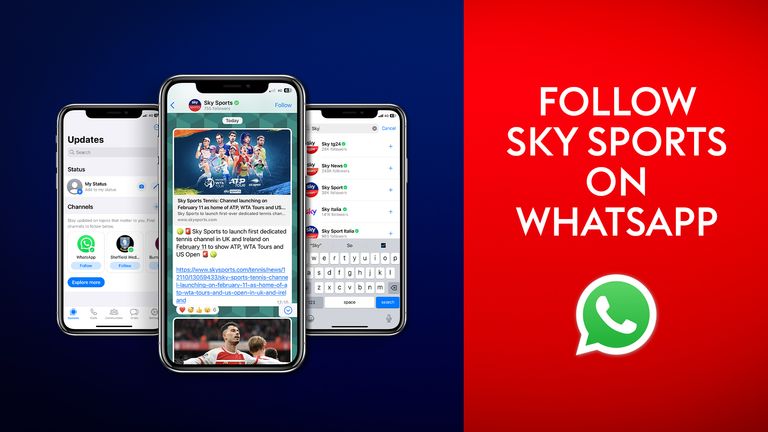In the latest Mic’d Up, PGMOL chief Howard Webb goes through incidents in Newcastle vs Bournemouth, Everton vs Spurs, Sheff Utd vs West Ham and more…
In full: Why Newcastle were awarded penalty despite Schar offside
Initially, Newcastle were flagged offside as a free-kick was played. However, Fabian Schar had also gone down in the area after having his shirt pulled by Bournemouth’s Adam Smith.
VAR felt that although Schar was in an offside position, he had not committed an offside offence, before sending referee Michael Salisbury to the monitor to review.
As a result, the referee overturned the initial decision to award Newcastle a penalty for the foul.
Howard Webb: “It’s an unusual situation and somewhat complex… the law specifically allocates some wording around this type of situation.
“For an offside offence to be committed, the player in an offside position has to challenge for the ball or play the ball – just being in an offside position itself is not necessarily an offence.
“So the law stipulates that a player who is in an offside position who is moving towards the ball with the intention of playing the ball at some point is then fouled by an opponent – prior to attempting to play the ball – it’s the foul that gets penalised because that occurred before the action by the attacker that would commit the offside offence.
“And that is the exact situation we saw here. When the free-kick is taken, Schar is in an offside position, there’s no doubt about that. He then starts moving towards goal and we see Adam Smith pull his shirt. It’s a sustained holding offence that starts outside and continues inside.
“In normal circumstances, we wouldn’t flag as soon as the free-kick comes in. The assistant referee waits to see where the ball goes – another Newcastle player might come in from an onside position and head the ball towards goal.
“Does Schar get involved with the play by challenging for the ball when it’s in that dropping zone? He doesn’t have a chance to do any of those things because he’s dragged down before he gets there.
“That action by Smith deprives Schar of being involved with a second phase, for example.
“Imagine if we had flagged immediately as the free-kick is taken. People would say ‘what are you doing, you don’t know where the ball is going. It might go to Botman, who is onside, and he might score. So why are you stopping this play in this moment?’
“We see that happen all the time in the Premier League where officials wait to see what happens. Schar might just stand and not continue moving forward, he might not get on the end of the ball. He’s not challenging for the ball in that moment so he’s not actually committing an offside offence, he’s just in an offside position.
“It happens a lot in the Premier League where goals are scored with players in an offside position.
“Of course, if the ball goes to Schar and he challenges Smith, that is an offside offence which we would penalise. That would take precedence over any holding offence.
“If the holding offence happens as he’s challenging for the ball, we’d give offside because he’s in the motion of challenging for the ball. But at this point, he isn’t.
“So the law stipulates that this is not an offence of offside because he’s just in an offside position, he hasn’t done anything. And if a player moving towards the ball in an offside position is fouled in this situation, the first offence is the foul because the offside hasn’t yet happened.
“He hasn’t done anything in that position that we could penalise as officials.”
In full: Bowen penalised for Ahmedhodzic incident
In the final moments of West Ham’s trip to Sheffield United, the Hammers thought they should have been awarded a penalty after Jarrod Bowen was seemingly barged over by Anel Ahmedhodzic. However, it was Sheffield United who were given the free-kick with Bowen committing the foul.
Howard Webb: “A lot of people thought it was a penalty. When you watch it on the TV, it shows a replay that looks like the Sheffield United player is not looking at the ball and bowls into Bowen.
“When VAR looked at that, knowing that the on-field decision by the referee was a free-kick to Sheffield United for a foul from Bowen, he sees quite clearly that Bowen’s arm is on the shoulder of Ahmedhodzic and pulls him towards Bowen and they fall over.
“The Sheffield United player is actually looking at the ball most of the time, he’s trying to maintain his view of the ball. He only can’t do that when he’s pulled by Bowen.
“Looking at all the angles we had available, we were able to confirm the on-field decision as a foul to Sheffield United, rather than the penalty most people thought should have been given when people watched it more casually on a TV broadcast.
“Don’t forget, the on-field decision is important. The independent panel – the key match incidents (KMI) panel, which has a lot of ex-players on it – that we put all incidents to were unanimous that this was a correct decision and not a penalty for the action by Bowen of pulling the defender onto him and going down.
“Ahmedhodzic is square, he’s defending in the way he’s meant to defend and he’s looking at the ball. There’s some jostling, which happens in most situations when balls are coming into the penalty area with players in close proximity, so we’re not too concerned about that.
“But then we see the arm coming round, which spins the player and off-balances him and brings him down. That’s what the on-field referee saw.
“From a VAR point of view, you’re never going to see that as a clear and obvious error.”
In full: Harrison goal stands despite Vicario tussle
Everton’s Jack Harrison saw the ball divert home off of his leg after a header from Dominic Calvert-Lewin. VAR reviewed it after a tussle between Harrison and Tottenham goalkeeper Guglielmo Vicario, but did not see a clear and obvious error in disallowing the goal. It was allowed to stand.
Howard Webb: “This one is just OK. We know that players are entitled to their space on the field.
“Harrison places his feet down, he might just place his body a little bit. He doesn’t step clearly into the path of Vicario, he doesn’t usher him into the back of the goal, he doesn’t drag his arm, which is important for the goalkeeper of course.
“We are seeing more tactics in and around set-pieces that we need to be aware of. We have analysts as well that help us stay ahead of the game on those things.
“One of the things we’re always mindful of is the importance of the goalkeeper in set-pieces. He’s the only player that can use his hands so therefore he has a huge advantage. If people are trying to nullify goalkeepers, that can be really impactful.
“But this is one that’s just on the right side of acceptability. Harrison is entitled to use his own space, he has a bit of strength and I don’t see a clear action that takes the goalkeeper out and impedes him in a way I would want to see if this was penalised.
“But we are asking the on-field officials to deal with this first and foremost, not necessarily relying on VAR because a lot of these are subjective calls.”
In full: Why reason for Osborn disallowed goal was changed
Ben Osborn’s goal for Sheffield United is initially ruled out for a foul on the goalkeeper, but following a VAR check, the goal is instead chalked off for offside.
Howard Webb: “You hear the on-field officials penalise Ben Osborn for what they perceive, in real time, to be a foul on the goalkeeper.
“I think it’s the assistant referee on the far side who, on this set-piece, has been given the specific responsibility by the referee of focusing on the goalkeeper. He sees that coming-together, he thinks Osborn has grabbed hold of the goalkeeper’s arm and they penalise him.
“Thankfully, the referee holds his whistle until the ball is in the back of the goal before penalising so the VAR can check whether or not there is a foul on the goalkeeper.
“When the VAR looks at it, he doesn’t really see anything that’s worthy of being penalised. He sees a bit of a coming-together, but then he sees the goalkeeper reset. He’s not really impacted by that and determines that’s not a foul.
“Of course, we’re not only looking at that, we’re looking at the rest of the phase of play that leads up to that situation, including whether or not any players are in an offside position and when he looks at that and sees Osborn in an offside position when the ball is last played by a Sheffield United player.
“Yes, it hits Buonanotte before going to Osborn, but that’s only a deflection and therefore is still in an offside position, and still committing an offside offence right in front of the goalkeeper. It’s rightly intervened upon by the VAR to confirm the disallowing of the goal, but for a different reason to the one that was given on the field.
“If it was a deliberate play by Buonanotte, that would negate the position of Osborn. It’s not. It hits him, he has no time to control his body movement, he’s not actually playing the ball.
“In this situation, we still send the referee to the screen because the on-field decision was subjective – a foul – it would have been a direct free-kick to the defence. There’s no foul, but we send him to the screen to see that and then to also show them the offside and we restart with an indirect free-kick. Good process, good identification.
“If there’d been no offside, I know the VAR would’ve intervened to have this goal awarded because he recognised a clear and obvious error in the first decision – the foul on the goalkeeper – which he doesn’t think exists.”
In full: Solanke goal given vs West Ham
Bournemouth striker Dominic Solanke initially had a goal ruled out against West Ham for offside with on-field officials believing Ryan Christie had played him through. However, when VAR reviewed the incident, it showed Kalvin Phillips made the touch, playing Solanke onside. VAR then advised for a goal to be given.
Howard Webb: “A good example of why VAR is so important. At full speed, it does look like Ryan Christie plays that ball through to Solanke.
“The officials communicate to confirm that’s what they’ve seen. You’ll hear how much more the officials are communicating too.
“And when VAR check the video, they see the clear movement by Kalvin Phillips and it plays Solanke onside so a goal can be given.
“It shows the value of VAR in the Premier League.”
Get Sky Sports on WhatsApp!
You can now start receiving messages and alerts for the latest breaking sports news, analysis, in-depth features and videos from our dedicated WhatsApp channel!
Find out more here.


